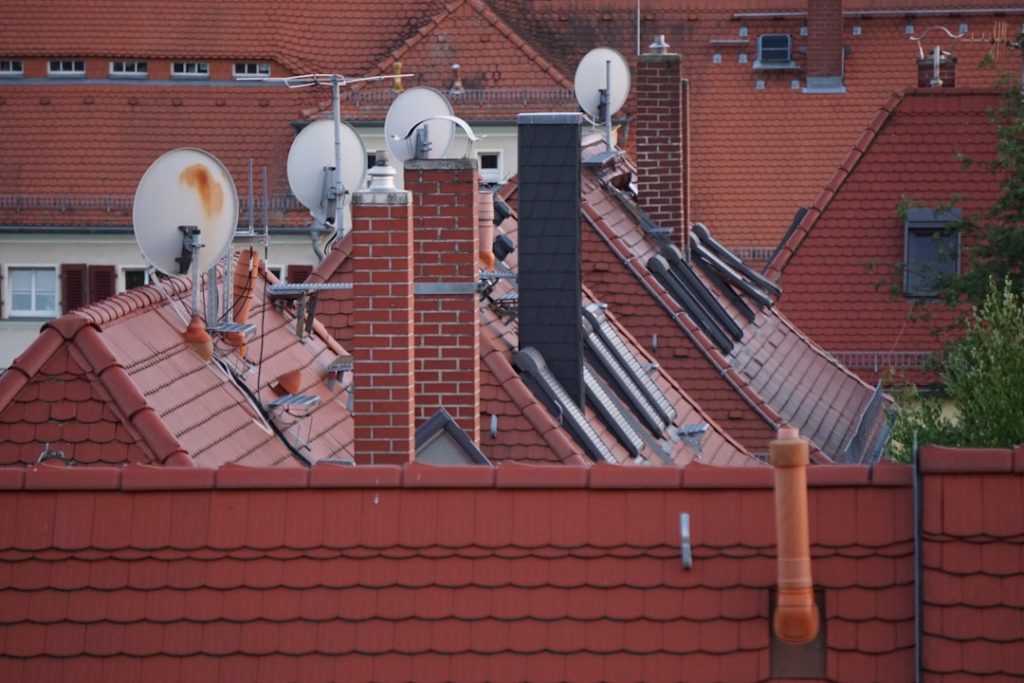In today’s digital age, the significance of internet marketing for roofing businesses cannot be overstated. The roofing industry, traditionally reliant on word-of-mouth referrals and local advertising, is experiencing a paradigm shift as consumers increasingly turn to the internet to find services. A well-executed internet marketing strategy allows roofing companies to reach a broader audience, engage with potential customers, and ultimately drive sales.
With the majority of homeowners conducting online research before making purchasing decisions, having a robust online presence is essential for any roofing business aiming to thrive in a competitive market. Moreover, internet marketing offers roofing businesses the ability to target specific demographics and geographic areas effectively. Through various online platforms, companies can tailor their marketing messages to resonate with their ideal customers.
For instance, a roofing contractor specializing in eco-friendly materials can target environmentally conscious homeowners through targeted ads and content. This level of precision not only enhances the efficiency of marketing efforts but also maximizes return on investment (ROI). As the roofing industry continues to evolve, embracing internet marketing strategies is no longer optional; it is a necessity for sustained growth and success.
Key Takeaways
- Internet marketing is essential for roofing businesses to attract and retain customers in a competitive market.
- Establishing a strong online presence through a professional website and active social media profiles boosts visibility.
- SEO strategies improve search engine rankings, making it easier for potential clients to find your roofing services.
- Email marketing and online ads are effective tools for generating qualified leads and increasing customer engagement.
- Customer reviews, content marketing, and performance analysis build trust and help refine marketing strategies for better results.
Creating a Strong Online Presence for Your Roofing Business
Establishing a strong online presence is the cornerstone of effective internet marketing for roofing businesses. This begins with a professional website that serves as the digital storefront. A well-designed website should be user-friendly, mobile-responsive, and optimized for search engines.
It should clearly showcase the services offered, provide contact information, and include high-quality images of past projects. Additionally, incorporating elements such as a blog or resource center can position the business as an authority in the roofing industry, providing valuable information to potential customers while improving search engine rankings. Beyond the website, roofing businesses should also claim and optimize their profiles on various online directories and platforms such as Google My Business, Yelp, and Angie’s List.
These platforms not only enhance visibility but also allow businesses to manage their online reputation effectively. By ensuring that all information is accurate and up-to-date, roofing companies can improve their chances of being found by local customers searching for roofing services. Furthermore, engaging with customers through these platforms by responding to reviews and inquiries can foster a sense of community and trust, which is crucial in an industry where reputation plays a significant role in customer decision-making.
Utilizing Social Media to Reach Potential Customers

Social media has emerged as a powerful tool for roofing businesses looking to connect with potential customers. Platforms such as Facebook, Instagram, and LinkedIn offer unique opportunities to showcase completed projects, share customer testimonials, and engage with the community. By posting high-quality images of roofs before and after installation or repair, roofing companies can visually demonstrate their expertise and attract attention from homeowners in need of similar services.
Additionally, social media allows for real-time interaction with customers, enabling businesses to answer questions, address concerns, and build relationships that can lead to future sales. Moreover, social media advertising provides roofing businesses with targeted marketing options that can significantly enhance their reach. For instance, Facebook Ads allow companies to target specific demographics based on location, age, interests, and behaviors.
This means that a roofing business can create ads specifically aimed at homeowners within a certain geographic area who are likely to need roofing services. By leveraging these advertising capabilities, roofing companies can increase brand awareness and generate leads more effectively than traditional advertising methods.
Implementing Search Engine Optimization (SEO) Strategies for Increased Visibility
| SEO Strategy | Key Metrics | Measurement Tool | Target Outcome | Timeframe |
|---|---|---|---|---|
| Keyword Research & Optimization | Keyword Rankings, Search Volume, CTR | Google Search Console, SEMrush | Top 10 ranking for primary keywords | 3-6 months |
| On-Page SEO (Meta Tags, Headers, Content) | Page Load Time, Bounce Rate, Dwell Time | Google Analytics, PageSpeed Insights | Reduce bounce rate by 15%, improve engagement | 1-3 months |
| Technical SEO (Site Structure, Mobile Optimization) | Mobile Usability Score, Crawl Errors, Indexing Status | Google Search Console, Screaming Frog | 100% mobile-friendly, zero crawl errors | 1-2 months |
| Content Marketing & Link Building | Backlink Quantity & Quality, Domain Authority | Ahrefs, Moz | Increase domain authority by 10 points | 6-12 months |
| Local SEO | Local Pack Rankings, Google My Business Views | Google My Business Insights, BrightLocal | Top 3 local pack ranking for target keywords | 3-6 months |
| Monitoring & Reporting | Organic Traffic, Conversion Rate, ROI | Google Analytics, Google Data Studio | Increase organic traffic by 25%, improve conversions | Ongoing |
Search Engine Optimization (SEO) is a critical component of internet marketing that can dramatically improve a roofing business’s online visibility. By optimizing their website for relevant keywords—such as “roof repair,” “roof installation,” or “local roofing contractor”—businesses can increase their chances of appearing on the first page of search engine results. This is particularly important because studies show that the majority of users do not venture beyond the first page when searching for services online.
Effective SEO strategies involve not only keyword optimization but also creating high-quality content that addresses common questions or concerns related to roofing. In addition to on-page SEO techniques, roofing businesses should also focus on building backlinks from reputable websites within the industry. Backlinks serve as endorsements from other sites and can significantly boost a website’s authority in the eyes of search engines.
Engaging in guest blogging or collaborating with local home improvement blogs can be effective ways to earn these valuable links. Furthermore, local SEO strategies—such as optimizing Google My Business listings and ensuring consistent NAP (Name, Address, Phone Number) information across all platforms—are essential for attracting local customers searching for roofing services.
Generating Leads through Email Marketing and Online Advertising
Email marketing remains one of the most effective tools for generating leads in the roofing industry. By building an email list through website sign-ups or social media campaigns, roofing businesses can nurture relationships with potential customers over time. Sending regular newsletters that include tips on roof maintenance, seasonal promotions, or updates on recent projects can keep the business top-of-mind for homeowners considering roofing services.
Personalization is key; addressing recipients by name and tailoring content based on their interests or previous interactions can significantly enhance engagement rates. In addition to email marketing, online advertising—such as pay-per-click (PPC) campaigns—can drive immediate traffic to a roofing business’s website. Platforms like Google Ads allow companies to bid on keywords relevant to their services and display ads to users actively searching for those terms.
This targeted approach ensures that advertising dollars are spent efficiently by reaching individuals who are already interested in roofing solutions. Combining email marketing with online advertising creates a comprehensive lead generation strategy that can yield substantial results when executed effectively.
Building Trust and Credibility with Customer Reviews and Testimonials

In an industry where trust is paramount, customer reviews and testimonials play a crucial role in establishing credibility for roofing businesses. Positive reviews on platforms like Google My Business or Yelp can significantly influence potential customers’ decisions when selecting a contractor. Encouraging satisfied customers to leave reviews not only enhances the business’s online reputation but also provides social proof that can sway undecided homeowners.
Responding to reviews—both positive and negative—demonstrates a commitment to customer satisfaction and transparency. Incorporating testimonials into marketing materials—such as the company website or social media posts—can further bolster credibility. Video testimonials from satisfied clients can be particularly impactful, as they provide an authentic glimpse into the customer experience.
Additionally, showcasing any industry certifications or awards received can enhance trustworthiness in the eyes of potential clients. By actively managing their online reputation and highlighting positive customer experiences, roofing businesses can differentiate themselves from competitors and foster long-term relationships with clients.
Leveraging Content Marketing to Educate and Engage Your Audience
Content marketing is an invaluable strategy for roofing businesses seeking to educate and engage their audience while simultaneously improving SEO efforts. By creating informative blog posts or articles that address common roofing issues—such as signs of roof damage or tips for choosing the right materials—businesses can position themselves as knowledgeable authorities in the field. This not only helps potential customers make informed decisions but also drives organic traffic to the website as users search for relevant information.
Additionally, incorporating visual content such as infographics or videos can enhance engagement levels significantly. For example, a video demonstrating the roof installation process or an infographic outlining different types of roofing materials can capture attention more effectively than text alone. Sharing this content across social media platforms amplifies its reach and encourages sharing among users, further expanding the business’s visibility.
By consistently providing valuable content that resonates with their audience’s needs and interests, roofing companies can build lasting relationships with potential customers.
Measuring and Analyzing the Success of Your Internet Marketing Efforts
To ensure that internet marketing strategies are effective, roofing businesses must prioritize measuring and analyzing their efforts regularly. Utilizing tools such as Google Analytics allows companies to track website traffic, user behavior, and conversion rates. By understanding which marketing channels drive the most traffic and leads, businesses can allocate resources more effectively and refine their strategies accordingly.
For instance, if data reveals that social media campaigns are generating significant engagement but low conversion rates, adjustments can be made to improve call-to-action elements or landing page designs. Furthermore, monitoring key performance indicators (KPIs) such as click-through rates (CTR), return on ad spend (ROAS), and customer acquisition costs (CAC) provides valuable insights into overall marketing effectiveness. Regularly reviewing these metrics enables roofing businesses to identify trends over time and make data-driven decisions that enhance their marketing strategies.
By fostering a culture of continuous improvement through measurement and analysis, roofing companies can adapt to changing market conditions and maintain a competitive edge in the digital landscape.




